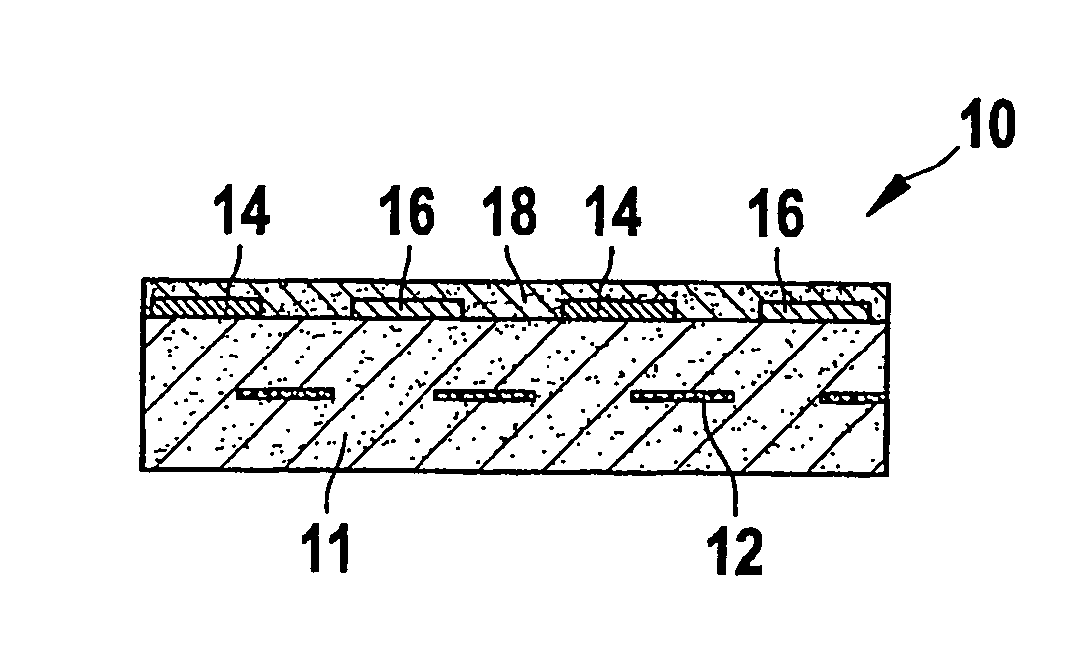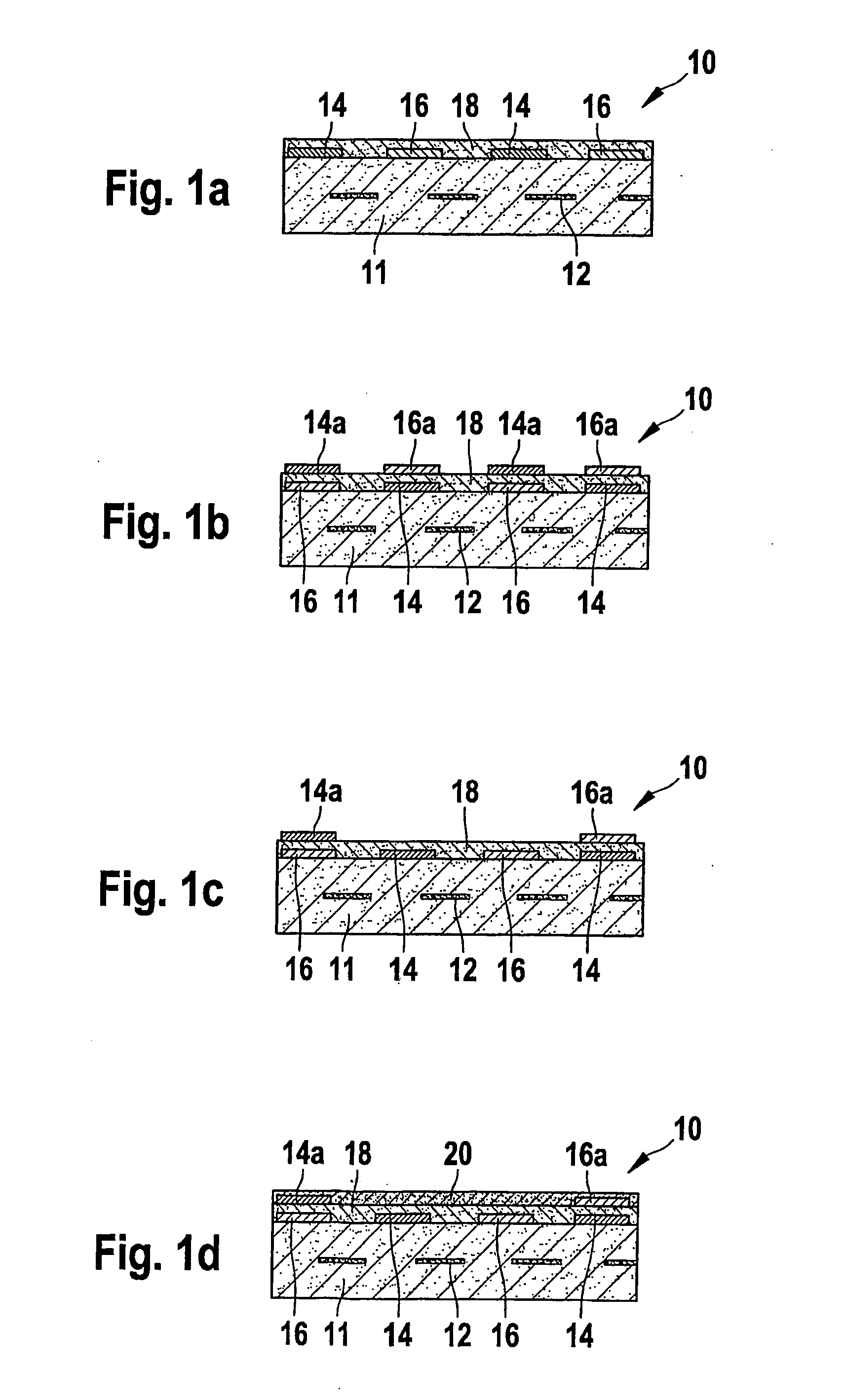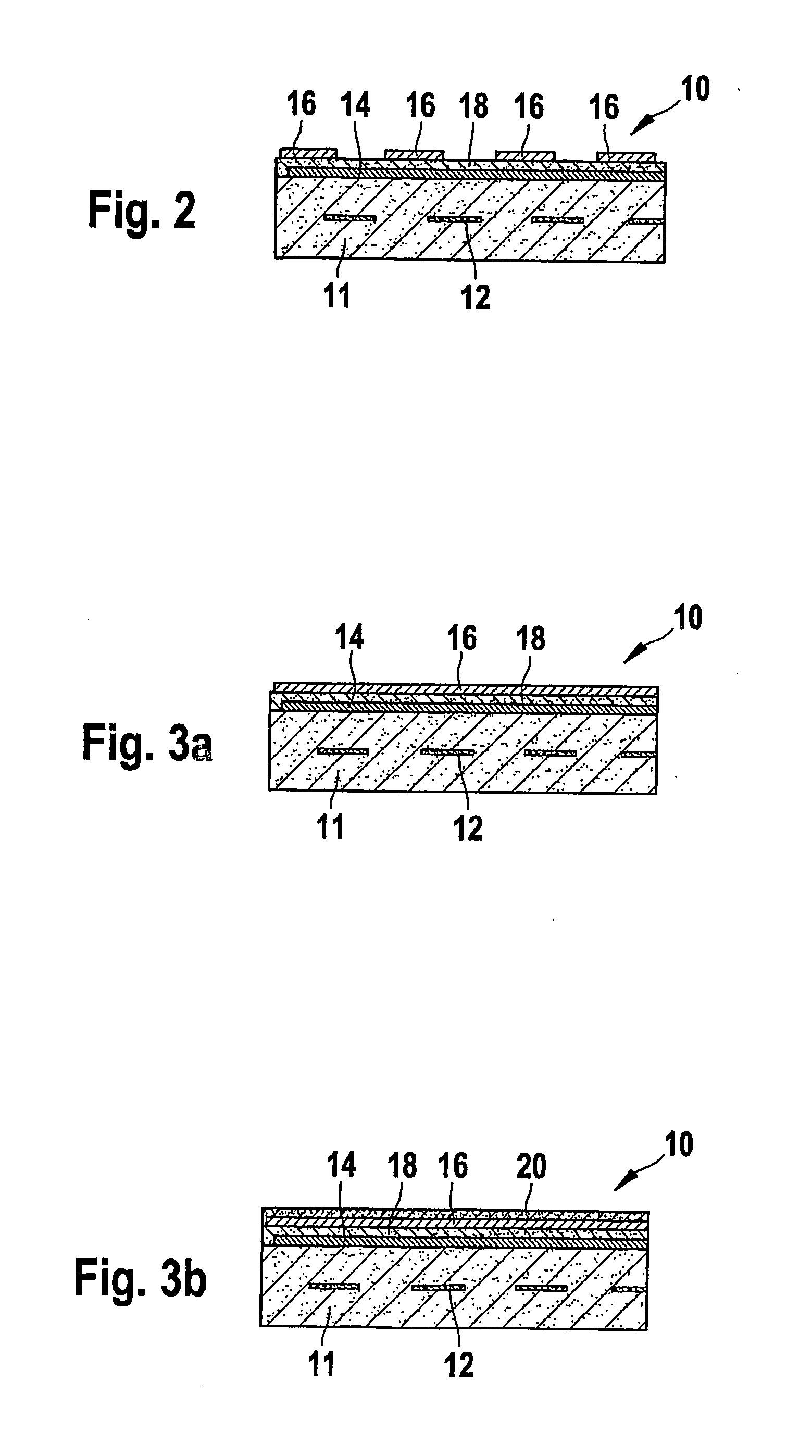Sensor Element for Particle Sensors and Method for Operating the Sensor Element
- Summary
- Abstract
- Description
- Claims
- Application Information
AI Technical Summary
Benefits of technology
Problems solved by technology
Method used
Image
Examples
Embodiment Construction
[0019]FIGS. 1a through 1d show a schematic structure of a first specific embodiment of the present invention. Reference numeral 10 denotes a ceramic sensor element for determining a particulate concentration in a gas mixture surrounding the sensor element. Sensor element 10 includes a ceramic substrate 11, an electrically insulating material such as barium-containing aluminum oxide being used as the ceramic material because this material has a largely constant high electrical resistance over a long period of time even when exposed to thermal cycling. Alternatively, the use of cerium dioxide and / or the addition of other alkaline earth oxides is also possible.
[0020] Sensor element 10 also has a ceramic heating element 12 which is designed in the form of a resistive printed conductor and is used for heating sensor element 10, in particular to the temperature of the gas mixture to be determined or for burning off the soot particles deposited on the surface of sensor element 10. The res...
PUM
 Login to View More
Login to View More Abstract
Description
Claims
Application Information
 Login to View More
Login to View More - Generate Ideas
- Intellectual Property
- Life Sciences
- Materials
- Tech Scout
- Unparalleled Data Quality
- Higher Quality Content
- 60% Fewer Hallucinations
Browse by: Latest US Patents, China's latest patents, Technical Efficacy Thesaurus, Application Domain, Technology Topic, Popular Technical Reports.
© 2025 PatSnap. All rights reserved.Legal|Privacy policy|Modern Slavery Act Transparency Statement|Sitemap|About US| Contact US: help@patsnap.com



